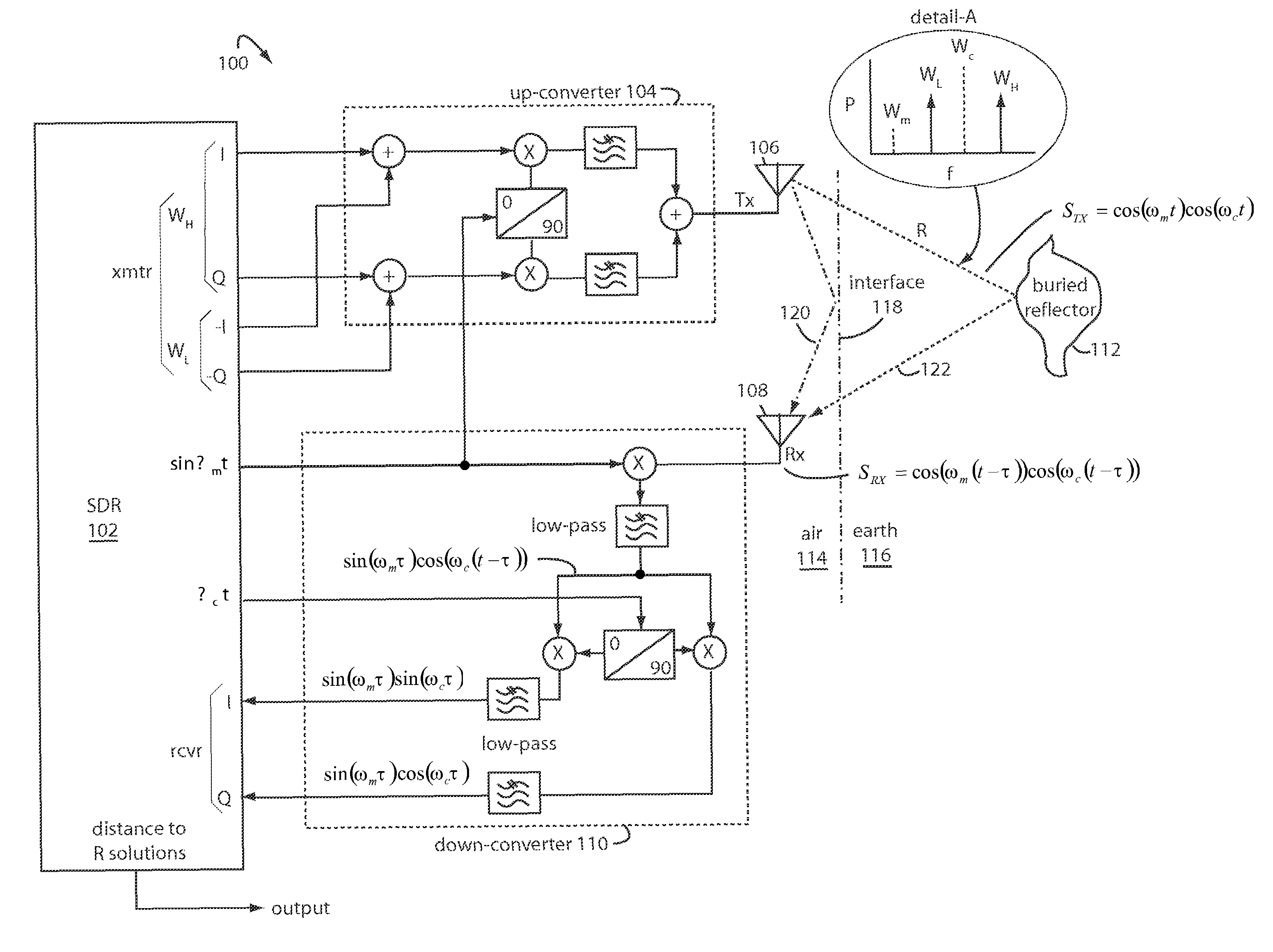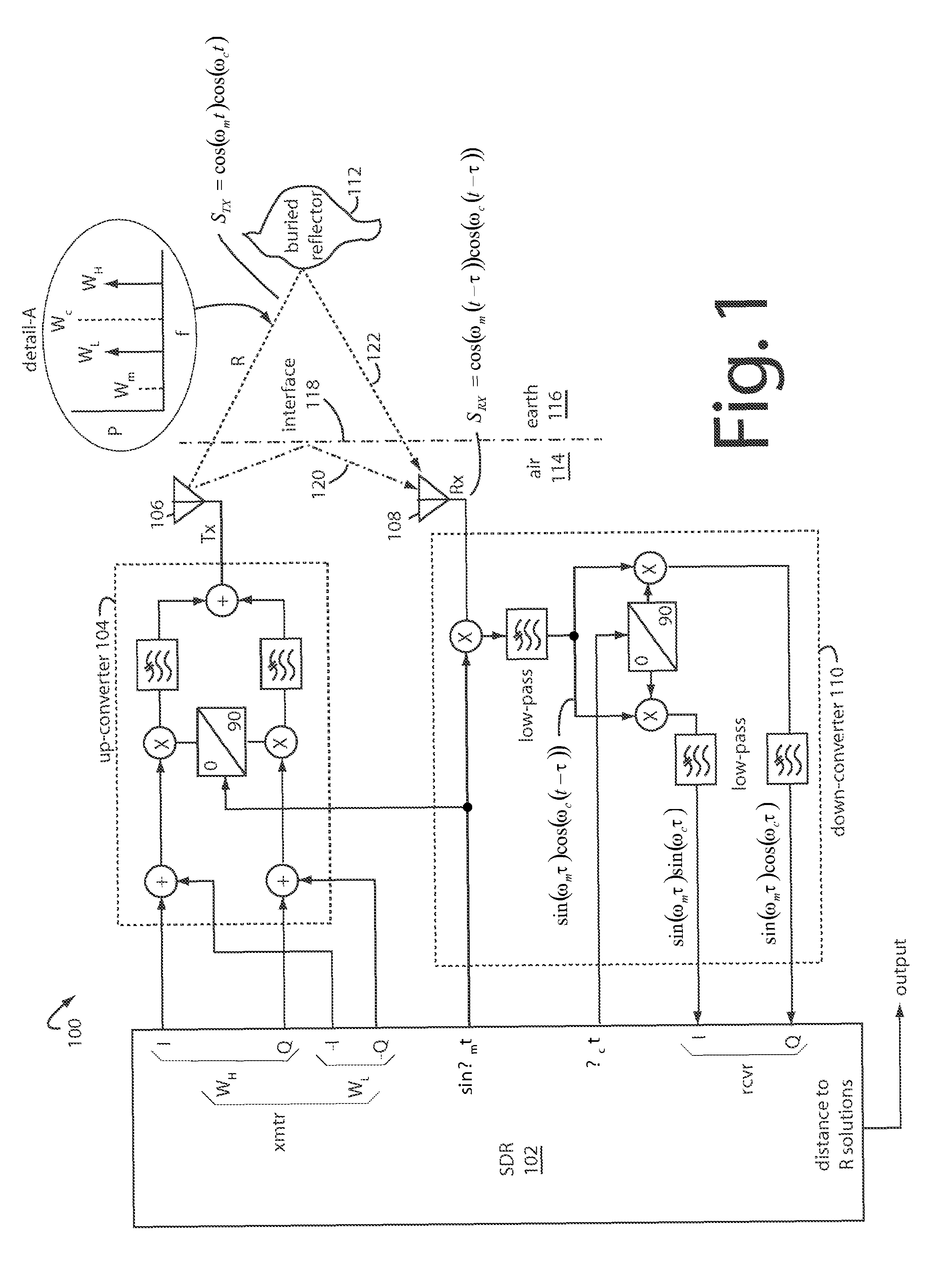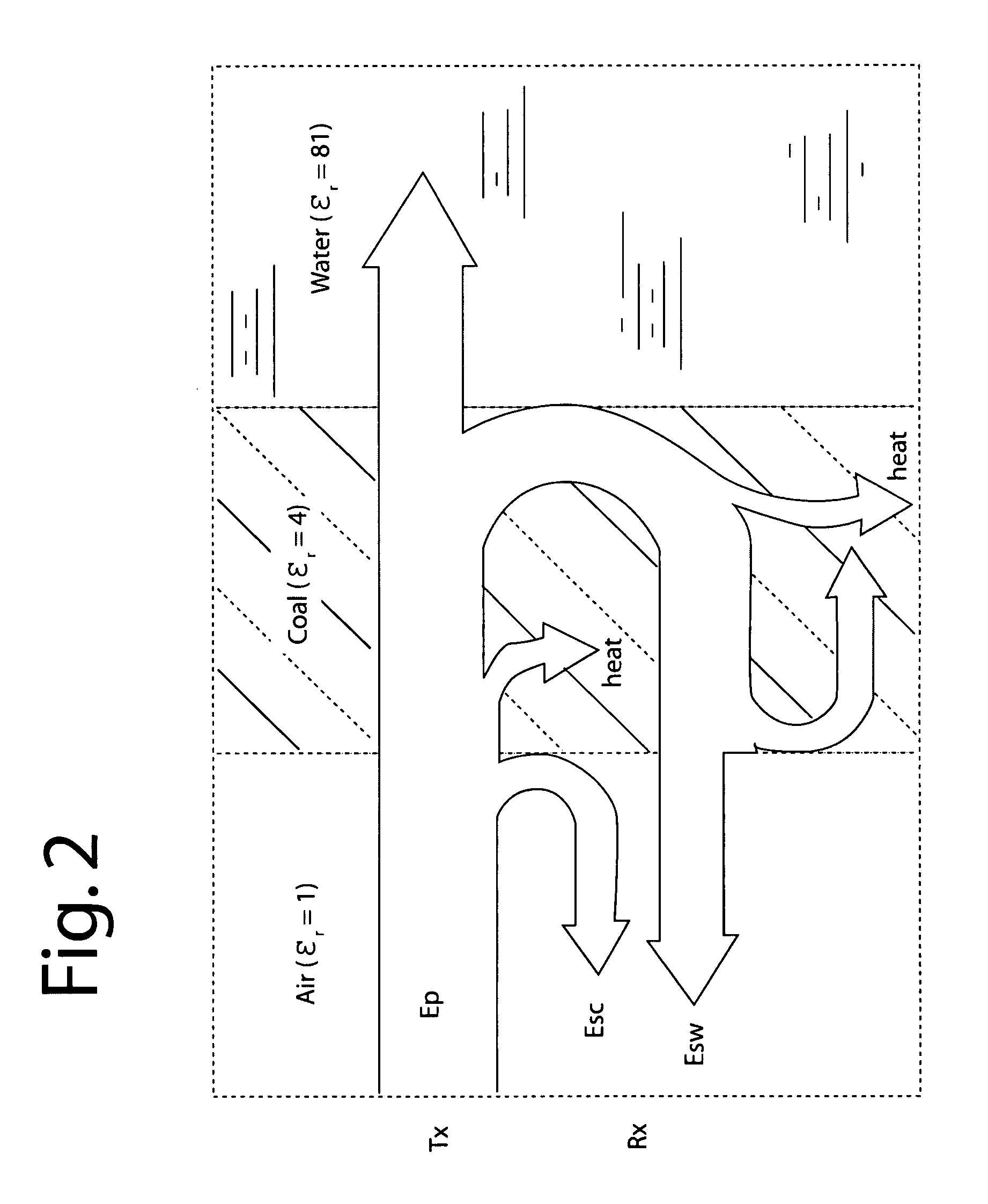Earth-penetrating radar with inherent near-field rejection
a radar and near-field technology, applied in the field of ground penetrating radars, can solve the problems of burying the antenna or contacting the surface very often not practical, burying the echo signals deep in the noise floor, and affecting the accuracy of earth-penetrating imaging, so as to achieve the effect of increasing the gain and efficient earth-penetrating imaging
- Summary
- Abstract
- Description
- Claims
- Application Information
AI Technical Summary
Benefits of technology
Problems solved by technology
Method used
Image
Examples
Embodiment Construction
[0014]FIG. 1 illustrates a radar embodiment of the present invention, and is referred to herein by the general reference numeral 100. The challenges in design are two fold, how to generate widely separated coherent frequencies, and how to transmit the two widely separated signals with equal amplitudes. Radar 100 does both by using software defined radio (SDR) techniques to generate the two coherent baseband frequencies separated by 1 MHz, and then uses up-conversion to increase the separation to 30 MHz. This technique also makes it practical to use the current state-of-the-art SDR technology, since clock frequencies are limited to well below the 30 MHz carrier frequencies used here. Adaptive digital predistortion techniques are used to equalize the magnitudes of the two frequencies by using feedback to calibrate for the compensation needed. Such then eliminates the expense of using low distortion power amplifiers and flat frequency response antennas.
[0015]The radar 100 comprises a s...
PUM
 Login to View More
Login to View More Abstract
Description
Claims
Application Information
 Login to View More
Login to View More - R&D
- Intellectual Property
- Life Sciences
- Materials
- Tech Scout
- Unparalleled Data Quality
- Higher Quality Content
- 60% Fewer Hallucinations
Browse by: Latest US Patents, China's latest patents, Technical Efficacy Thesaurus, Application Domain, Technology Topic, Popular Technical Reports.
© 2025 PatSnap. All rights reserved.Legal|Privacy policy|Modern Slavery Act Transparency Statement|Sitemap|About US| Contact US: help@patsnap.com



